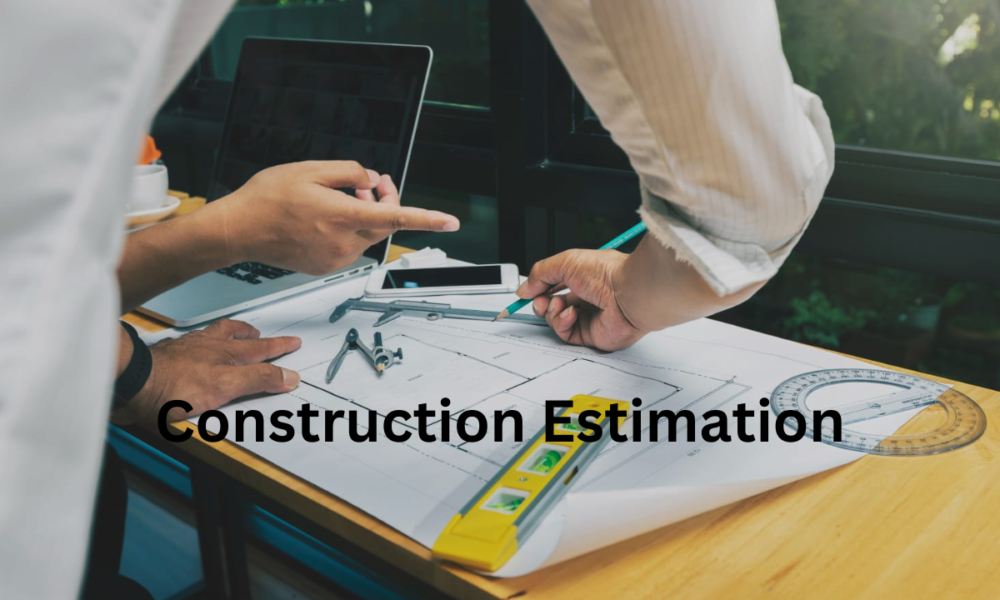From Plans to Projections: The Art and Science of Construction Estimation
Construction projects involving the residential construction of a home or even the construction of a stadium are massive projects that will need estimations of the costs and an estimate of what is likely to happen in the construction process. Construction estimate refers to the activity of assessing and calculating the costs of a construction project. It is a very complex process that is considered an art and a science at the same time; there is a good amount of numerical calculations involved in it, as well as a good number of judgments which make it unique. It is worth looking at some of the key components that enable contractors and developers to bring architectural plans to life and accurately account for the financial side of things.
Understanding the Plans
The construction estimating companies process is carried out by reviewing the architectural and engineering maps of the project. The estimator must remember all the small details and nuances given in the plans, both the dimensions of the construction and the kinds of materials indicated. They need to visualize the completed building along with gaining intimate knowledge of essential plan elements like:
- Site plans illustrate the location of rooms and the proportions of the spaces to be planned.
- Exterior finishes and elements such as facades as well as roof parapets are other types of elevations.
- Technical drawings showing the type of construction methods and the amount of loads that the supports need to withstand.
- HVAC, plumbing, electrical, and conveying systems are all included in the mechanical plans, which are included in the construction documentation and integrated into the building design.
- Specific material requirements detailing even the type, make, and quality of products to be used
These plans are useful in taking off quantities because the estimator measures or counts each material or labor input that is required. A quantity is something like many yards of drywalls or light fixtures, feet of ducts, or cubic yards of concrete.
Applying Costs
After fully taking off all the quantities, the estimator proceeds to cost every input at a unit cost. This includes the estimation of the labor cost, material cost, and equipment cost per time used in the project. Some costs are from standard price databases while some others involve just a phone call to the suppliers for quotations. Early costs of similar past projects are compared and various other economic factors such as inflation, recession, and availability of materials are also considered for this purpose.
Each construction activity has direct costs, which are obtained by multiplying the quantities by the corresponding unit costs. The sum of the labor, material, and equipment costs for the takeoff items provides the direct cost for the construction. From here, practiced and professional estimators incorporate common percentage rates which cover such overheads, profit, bonds, permits, insurance, fees, contingency plans, and other incidental costs.
The Art of Estimation
While the construction estimating services, pricing, and mathematical calculations form the science behind an estimate, there are artistic judgment calls inherent in the process:
- Forecasting allowances for miscellaneous and unspecified losses such as the costs of cleaning up spoiled soil or other repair costs
- Predicting work timetables and segregating contracts into sections and steps
- The difference in allowance categorization between design solution options
- Any assumption on the production rate and operational efficiency
- Determining the market suitability for the acquisition of equipment and specialty trades
- In a bid to avoid these issues, a construction project must anticipate quantity waste and cost hikes over the construction period.
These uncertainties and subjectivities are estimated to be more of a voodoo than a calculated figure in Mathematics.
Revisiting and Revising
Due to the nature of the estimate, it is common for the estimate to be reviewed and updated as the design moves from conceptual drawings to construction documents. Re-estimating costs on more than one occasion is useful because it can lead to better estimates and less shock in the event of contractor bids. This means that incorporating contingencies makes it possible to accommodate fairly significant cost hikes without derailing a project’s overall budget.
Value Engineering Options
If, for instance, the estimated cost of construction exceeds the set budget, the contractor may advise on value engineering options that will help contain the cost while not distorting the building program or looks. These options present choices such as:
- Replacing similar performance with other materials at a cheaper cost.
- How to simplify designs of some of the features that are contained in the architectural plan.
- It may involve using different framing techniques or even completely eradicating certain support structures.
- Adapting mechanical schemes for a system to employ better systems.
The amendments involve determining the cost effect to ascertain whether the value engineering has met the project savings needed to accomplish the design intent.
Estimation Plays An Important Role
Unlike, in other projects, estimation does not stop when construction starts; it continues as a dynamic process. It is important to keep track of costs in the project continuously to the provided projections. The comparative analysis of actual costs against the estimated benchmarks allows for the variance recognition and identification of necessary actions before costs spin beyond control. The conditions that need updating are the changes that may occur in mid-project; thus, contingency funds may be properly reallocated to address all the issues that may arise.
It follows that the progression from a pre-design idea to a constructed form demands continually flexible and approximations. The finished plans are adjusted to reflect these revised estimates through construction estimators mathematical computations combined with professional opinions—science and art. Secure construction estimating brings accurate cost estimates to create the fiscal framework for a successful venture.
Conclusion
It is the mathematical link that bridges conceptions and concrete formations in construction starting from simple drawings, rough sketches, outlined drawings, and approved plans to the final constructed facility. Through accurately estimating required resources with detailed take-offs, pricing factors by market rates, and integrating sagacious additions, estimators transform ideas into live projects. Construction estimation compiles the quantitative values and subjective feelings required to guide the selection and actualize turning innovative ideas into physical realities.







